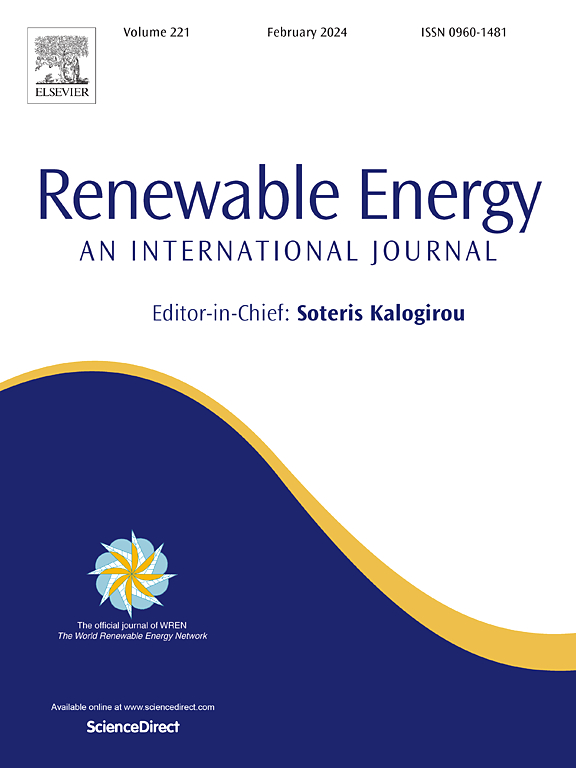Design and coupled analysis of a novel floating offshore wind turbine combined with a fish cage for deep water
IF 9
1区 工程技术
Q1 ENERGY & FUELS
引用次数: 0
Abstract
As floating offshore wind projects expand into deeper waters, floating platforms have emerged as the most viable solution for wind turbine support. The integration of aquaculture within offshore wind farms has gained considerable research interest as an efficient marine spatial utilization strategy. To advance the synergistic development of offshore wind energy and marine ranching, this study introduces an innovative floating offshore wind turbine integrated with a fish cage structure. A 1:6-scaled demo system was developed, incorporating design optimizations derived from full-scale configurations. Frequency-domain hydrodynamic analysis and survivability assessment were conducted to evaluate the demo system's performance under various environmental conditions, including wind-wave-current interactions and tidal variations. A coupled time-domain model was established by quantifying equivalent wind turbine loads and accounting for foundation-mooring dynamic interactions. Results demonstrate that wave and current forces dominate the demo system's response under operational conditions. Platform motion amplitudes and mooring tensions escalate with decreasing tidal elevations. Importantly, safety factors remain compliant with regulatory thresholds even at minimal tidal levels across diverse wind-wave-current directional combinations, confirming Demo II's structural integrity under extreme marine environments.
求助全文
约1分钟内获得全文
求助全文
来源期刊

Renewable Energy
工程技术-能源与燃料
CiteScore
18.40
自引率
9.20%
发文量
1955
审稿时长
6.6 months
期刊介绍:
Renewable Energy journal is dedicated to advancing knowledge and disseminating insights on various topics and technologies within renewable energy systems and components. Our mission is to support researchers, engineers, economists, manufacturers, NGOs, associations, and societies in staying updated on new developments in their respective fields and applying alternative energy solutions to current practices.
As an international, multidisciplinary journal in renewable energy engineering and research, we strive to be a premier peer-reviewed platform and a trusted source of original research and reviews in the field of renewable energy. Join us in our endeavor to drive innovation and progress in sustainable energy solutions.
 求助内容:
求助内容: 应助结果提醒方式:
应助结果提醒方式:


